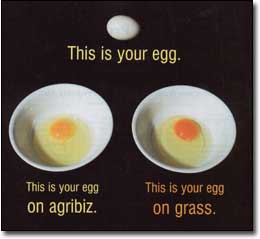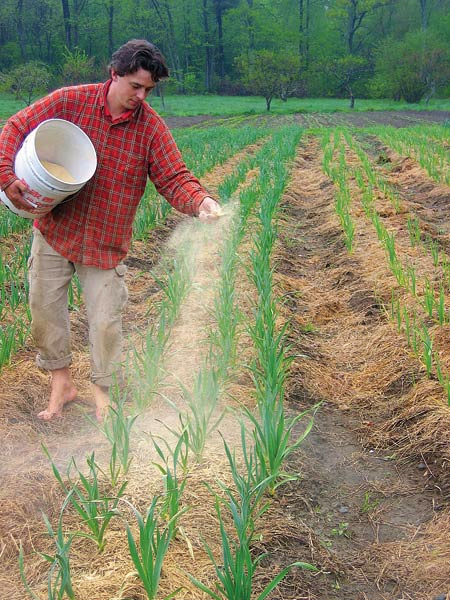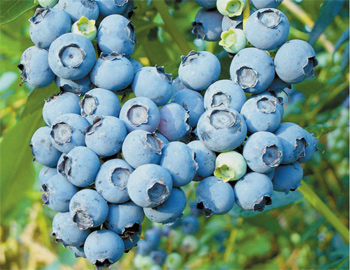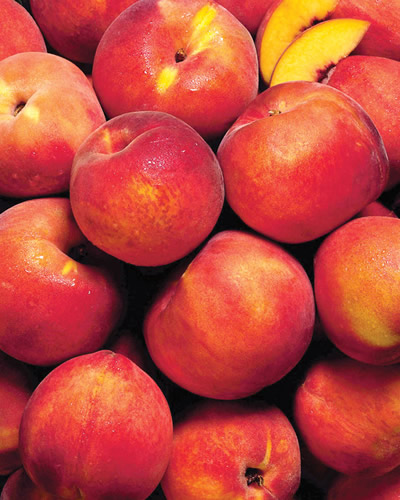The Problem With Today's Food
 Dan Kittredge interview with Steve Day on WSKV's "Pulse" radio show.
Dan Kittredge interview with Steve Day on WSKV's "Pulse" radio show.
 Dan Kittredge interview with Steve Day on WSKV's "Pulse" radio show.
Dan Kittredge interview with Steve Day on WSKV's "Pulse" radio show.
The Real Food Campaign, a new non-profit supporting sustainably grown local food, is seeking to raise $300,000 by the end of 2011. Real Food is part of the Bionutrient Food Association, which looks not only at organic practices but also at nutrient density. The funds will support outreach and workshops in growing bionutrient rich food for both homesteaders and commercial growers.
Recent studies have indicated that farming practices developed since WWII that rely heavily on nitrogen and on fast crop production have resulted in foods with dramatically lower crop nutrient value. In other words, a squash grown in 1915, with traditional practices, without chemical fertilizers and without pesticides has 50% more nutrient value without the trace pesticides (and is likely to taste better, too) than squash found in the chain grocery store today.
 They say you are what you eat. Some farmers are taking this logic beyond its people-centric focus, and applying it in innovative ways to their crops. Enter the nutrient-dense farming movement — a start-at-the-soil approach to growing food that proponents say is much better for you, in the form of plants that are healthier themselves. "In the nature versus nurture debate ... we are falling short on nurture," said Dan Kittredge, director of the Real Food Campaign, who will give a free lecture about nutrient-dense farming Tuesday at Friends Academy in Dartmouth. "Simply by addressing the nurture deficiencies, our plants begin to express more of their full genetic potential."
They say you are what you eat. Some farmers are taking this logic beyond its people-centric focus, and applying it in innovative ways to their crops. Enter the nutrient-dense farming movement — a start-at-the-soil approach to growing food that proponents say is much better for you, in the form of plants that are healthier themselves. "In the nature versus nurture debate ... we are falling short on nurture," said Dan Kittredge, director of the Real Food Campaign, who will give a free lecture about nutrient-dense farming Tuesday at Friends Academy in Dartmouth. "Simply by addressing the nurture deficiencies, our plants begin to express more of their full genetic potential."
 American agribusiness is producing more food than ever before, but the evidence is building that the vitamins and minerals in that food are declining. For example, take the two eggs shown at right. The one with the bright orange yolk is from a free-range chicken raised by Mother Earth News managing editor Nancy Smith, while the pale one is a supermarket egg from a hen raised indoors on a "factory farm." Eggs from free-range hens contain up to 30 percent more vitamin E, 50 percent more folic acid and 30 percent more vitamin B-12 than factory eggs. And the bright orange color of the yolk shows higher levels of antioxidant carotenes. (Many factory-farm eggs are so pale that producers feed the hens expensive marigold flowers to make the yolks brighter in color.)
American agribusiness is producing more food than ever before, but the evidence is building that the vitamins and minerals in that food are declining. For example, take the two eggs shown at right. The one with the bright orange yolk is from a free-range chicken raised by Mother Earth News managing editor Nancy Smith, while the pale one is a supermarket egg from a hen raised indoors on a "factory farm." Eggs from free-range hens contain up to 30 percent more vitamin E, 50 percent more folic acid and 30 percent more vitamin B-12 than factory eggs. And the bright orange color of the yolk shows higher levels of antioxidant carotenes. (Many factory-farm eggs are so pale that producers feed the hens expensive marigold flowers to make the yolks brighter in color.)
 Beginning in the 1950s, America's farmers were told to get big, or get out. It wasn't just a slogan, it was USDA policy, a mantra recited by several secretaries of agriculture. That mindset, combined with a post-WWII explosion in chemical fertilizer use, made our farms larger and more productive than ever – but at a high price, with many small farmers vanishing and the introduction of new kinds of environmental challenges. Today, growing numbers of Americans believe there is another casualty: The quality of food produced by modern farming methods. Perhaps the most dissatisfied are farmers who got neither big, nor out, and who turned to traditional methods of producing crops.
Beginning in the 1950s, America's farmers were told to get big, or get out. It wasn't just a slogan, it was USDA policy, a mantra recited by several secretaries of agriculture. That mindset, combined with a post-WWII explosion in chemical fertilizer use, made our farms larger and more productive than ever – but at a high price, with many small farmers vanishing and the introduction of new kinds of environmental challenges. Today, growing numbers of Americans believe there is another casualty: The quality of food produced by modern farming methods. Perhaps the most dissatisfied are farmers who got neither big, nor out, and who turned to traditional methods of producing crops.

What does the term mean, and how do we produce them? Nutrient Density is the end product of a highly functioning biological system, where the crop harvested has a measurably larger quantity of a broad spectrum of different minerals, vitamins, phytonutrients, and antioxidants than its counterparts. These components are also in healthy ratios with each other. In relation to their same species counterparts, nutrient-dense crops have relatively:
 Have you have ever wondered why today's supermarket-purchased fruits taste like mostly water, why vegetables have more of a feel in your mouth than a flavor, and why, in order to remain healthy, we need to keep taking increasing amounts of vitamin and mineral supplements? Nutritionists have stated for years that a proper diet will keep us healthy, yet our society keeps turning up with increasing sickness, even when proper amounts of fruits and vegetables are consumed.
Have you have ever wondered why today's supermarket-purchased fruits taste like mostly water, why vegetables have more of a feel in your mouth than a flavor, and why, in order to remain healthy, we need to keep taking increasing amounts of vitamin and mineral supplements? Nutritionists have stated for years that a proper diet will keep us healthy, yet our society keeps turning up with increasing sickness, even when proper amounts of fruits and vegetables are consumed.
Now a group of cutting-edge researchers, farmers and scientists have thrown aside "conventional wisdom" and have isolated the truth behind our poor produce. These discoveries have led to farming methods that are now turning out grains, fruits and vegetables that are dense with nutrients, bursting with flavor, and even have longer shelf lives. This is produce that tastes, feels and provides nutrition like it did in your great-grandmother's day.